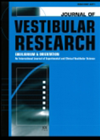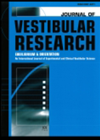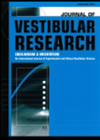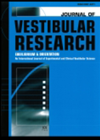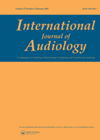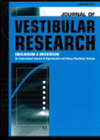
Journal Reviews
Impaired vestibulo-ocular reflex (VOR) gain correlates with hearing loss in vestibular schwannoma
The lack of correlation between the size of vestibular schwannoma (VS) and degree of hearing loss and vestibular function tests is well known. In this retrospective study, the focus was on the correlation between VOR gain of semicircular canal function,...
Does the season affect the diagnosis of vestibular disorders?
There are mixed results in the literature regarding seasonal variation in the presentation of various peripheral vestibular disorders. In this large population study involving over 20,000 patients recruited from 116 ENT practices across Germany, the authors analysed the demographic characteristics...
Do steroids improve outcome in acute vestibular neuritis?
The role of steroids in short and long-term recovery from acute vestibular neuritis has been a subject of debate for several years. The authors reported findings of a prospective randomised trial in 60 adult patients. Inclusion criteria were acute vertigo...
Is virtual reality the future of vestibular rehabilitation?
The use of virtual reality (VR) in vestibular rehabilitation is gaining some popularity but availability is hampered by cost. One VR system in use in some centres is the Hybrid VR unit which incorporates motion trackers and force platforms. This...
The applicability and reliability of SHIMP, a new vestibular test, in adolescents
The video head impulse (now called the head impulse paradigm – HIMP) is now a routine test battery in neuro-otological practice. Few will be familiar with the new suppression head impulse paradigm (SHIMP) test. The key difference is that, in...
Consequences of Meniere’s Tumarkin crises
Many will be familiar with reports of frightening drop attacks without loss of consciousness experienced by some Meniere’s disease (MD) patients. This study analysed data from an electronic survey of over 600 members of a national Meniere’s society. The aim...
International classification of bilateral vestibulopathy (BVP)
In the past few years the Bárány Society have been standardising the diagnostic criteria for various vestibular disorders – International Classification of Vestibular Disorders (ICVD). Diagnosis of BVP relies on history, bedside clinical assessment and objective vestibular tests. The authors...
Is clinical HIT as good as vHIT in the emergency room?
Establishing the cause of acute vestibular syndrome (AVS) is critical in the first few hours of presentation in the emergency department. The first question to ask is, “is it due to a peripheral vestibular pathology or a stroke?” This is...
Static positional nystagmus
This study aimed to clarify the interpretation of positional nystagmus (PN) by looking at the current criteria for significance of PN, comparison of PN in symptomatic patients with normative data, prevalence of PN among participants with balance problems and assessing...
The effect of vertigo on sleep
The authors analysed data of 20,950 individuals who completed the balance and dizziness supplements of the ongoing NHIS survey in 2008. The survey used a strict algorithm to identify individuals reporting vestibular vertigo and information on sleep duration and a...
How does the Dizziness Handicap Inventory (DHI) correlate with demographics and symptoms of patients?
The DHI is widely used to assess the self-perceived emotional, functional and physical disability in subjects with dizziness and balance problems. By studying the data of 568 patients retrospectively, the authors sought to determine the gender and age differences in...
Hearing provides cues for the maintenance of balance
It is well known that balance relies on the integration of vestibular, visual and proprioceptive cues. However not much mention or attention has been given to the importance of auditory cues for balance maintenance. The authors set up experiments to...

